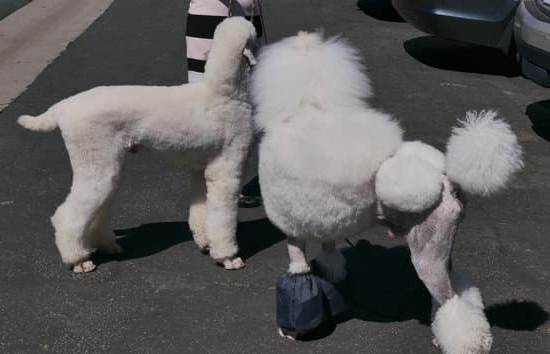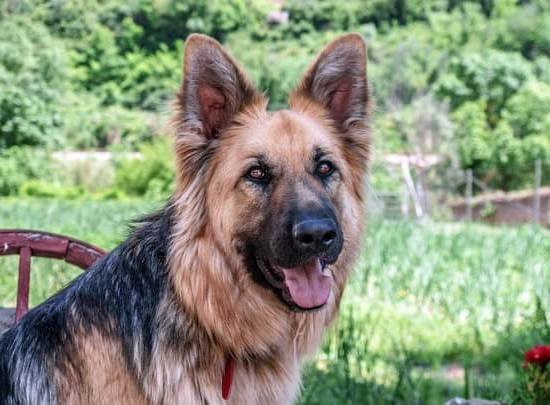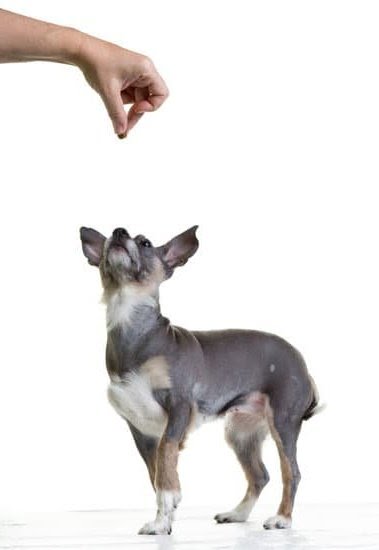Dogs are known for their affectionate nature, and one way they express their love is through licking. While this behavior can be endearing at first, it can quickly become overwhelming or even irritating when it happens excessively. If you find yourself wondering how to train your dog to stop licking you, you’re not alone. In this article, we will explore effective techniques to address this issue and provide practical solutions for dog owners.
Understanding the reason behind a dog’s licking behavior is crucial before implementing any training methods. Licking serves several purposes for dogs, including communication, grooming, and seeking attention or comfort. By gaining insight into the underlying reasons why your furry friend licks excessively, you will be better equipped to modify this behavior effectively.
Training a dog to stop licking is not just about etiquette; it is also vital for the well-being of both you as the owner and your pet. Excessive licking can lead to skin irritation or even open wounds in some cases. Additionally, if your dog has a habit of licking everything it encounters, from furniture to strangers’ faces, it could undermine your ability to take them out in public or maintain a clean household.
In the following sections of this article, we will delve deeper into the triggers that prompt excessive licking in dogs and explore positive reinforcement techniques as well as redirection strategies that can help curb this behavior. We will also discuss how taste deterrents can discourage licking and delve into the importance of consistency and persistence in breaking this habit.
Furthermore, we will touch on situations where seeking professional help might be necessary and present case studies that demonstrate successful outcomes in stopping unwanted dog licking behavior.
By empowering dog owners with effective methods to address excessive licking tendencies in their furry companions, we aim to create harmonious relationships between humans and their canine family members while ensuring the health and well-being of both parties involved.
The Importance of Training a Dog to Stop Licking
Licking is a natural behavior for dogs, but it can become problematic when it becomes excessive or directed towards humans. Therefore, training your dog to stop licking is important not only for your own comfort and cleanliness but also for the well-being of your dog. This section will discuss the importance of training a dog to stop licking and how it benefits both the owner and the canine companion.
Maintaining Healthy Boundaries and Respect
One of the main reasons why it is important to train a dog to stop licking is to establish healthy boundaries and respect in the owner-dog relationship. While some people may enjoy being licked by their dogs, others might find it uncomfortable or unpleasant.
By teaching your dog not to lick you, you are communicating that there are limitations on their behavior and reinforcing boundaries in a respectful manner. This helps to foster a more balanced relationship where both parties feel comfortable and respected.
Preventing Infection and Potential Health Risks
Another crucial reason for training a dog to stop licking is to prevent potential health risks. Dog saliva contains bacteria that can be harmful when it comes into contact with broken skin or open wounds. Excessive licking can prolong the healing process or even introduce harmful bacteria into the wound, leading to infections.
Additionally, some dogs may have dietary habits or environmental exposure that make their saliva less clean than others. By preventing your dog from licking you excessively, you reduce the risk of infections and potential health complications.
Maintaining Proper Hygiene
Training your dog not to lick you also helps maintain proper hygiene for both you and your pet. Dogs explore the world through their mouths, so their mouths can be exposed to various germs and bacteria during this process. When they lick humans excessively, they transfer these microorganisms onto our skin and clothes.
This can lead to unpleasant odors or stains on clothing as well as potential allergic reactions or skin irritation. By training your dog to refrain from licking, you can ensure a cleaner and more hygienic environment for both yourself and your furry friend.
Recognizing Common Triggers for Dog Licking
Licking is a natural behavior for dogs, but excessive or unwanted licking can become a nuisance for dog owners. To effectively train a dog to stop licking, it is crucial to understand the common triggers that prompt this behavior. By identifying these triggers, we can address the underlying reasons and provide appropriate training and redirection.
One common trigger for dog licking is anxiety or stress. Dogs often lick as a way to self-soothe in moments of distress.
It could be due to separation anxiety when their owners leave the house, or a response to new environments or situations that make them feel uneasy. As responsible dog owners, it is necessary to recognize signs of anxiety in our pets such as panting, pacing, or vocalizing and address it with positive reinforcement training techniques or seeking professional help if needed.
Another trigger is the desire for attention or interaction. Dogs are social animals who thrive on human companionship. Some dogs may resort to licking as a means of seeking attention from their owners or other people around them.
This behavior might be reinforced unknowingly by unintentionally rewarding it through petting, speaking sweetly, or giving affectionate gestures when they lick. It is important for dog owners to differentiate between genuine requests for attention and unwanted licking behaviors by setting clear boundaries and using positive reinforcement techniques to encourage alternative desirable behaviors.
Furthermore, medical issues can also play a role in triggering excessive licking behavior in dogs. Certain medical conditions like allergies, skin irritations, infections, gastrointestinal problems, pain, or discomfort can lead dogs to excessively lick specific areas of their bodies as an attempt to alleviate the discomfort they are experiencing.
If you notice that your dog’s licking behavior has suddenly increased without any obvious trigger and persists despite attempts at training interventions, consulting with a veterinarian would be advisable to rule out any underlying health concerns.
By being attentive and observant, dog owners can detect and address the common triggers for dog licking. Understanding these triggers allows for effective training, redirection, and the implementation of appropriate strategies to modify unwanted licking behaviors. Through consistency, persistence, and the application of positive reinforcement techniques, dog owners can empower themselves to train their dogs to stop licking in a kind and compassionate manner.
Positive Reinforcement
Positive reinforcement is an effective method for training dogs to stop licking. By teaching the command “no licking,” dog owners can effectively communicate their expectations and discourage this behavior.
To begin, it is important to establish a clear cue or command for when the dog begins to lick. This could be a simple verbal cue such as saying “no licking” in a firm tone of voice, or it could be a hand signal that the dog recognizes. Consistency is key when using positive reinforcement, so it is important to use the same cue every time.
Once the dog starts to lick, interrupt the behavior by gently but firmly saying “no licking” and redirect their attention to another activity or command. For example, you can instruct them to sit, lie down, or fetch a toy instead of licking. Remember to praise and reward the dog with treats, praise, or affection when they comply with the command and stop licking.
It is important to note that positive reinforcement should always be used in conjunction with other methods outlined in this article for best results. Dogs are social animals and thrive on positive interactions with their owners. By reinforcing desired behaviors like not licking with rewards and affection, you can strengthen your bond with your dog while also addressing the unwanted behavior.
Redirecting the Dog’s Attention
One effective way to train a dog to stop licking is by redirecting their attention to alternative activities. Dogs lick as a form of communication or as a soothing mechanism, so it is important to provide them with suitable alternatives that fulfill their needs. By engaging in alternative activities, you can help redirect their focus and prevent them from resorting to licking behaviors.
Interactive Toys and Puzzles
Providing your dog with interactive toys and puzzles can keep them mentally stimulated and physically engaged, reducing the likelihood of excessive licking. These toys are designed to challenge them and provide mental enrichment. Examples include treat-dispensing toys, puzzle feeders, or activity balls that require problem-solving skills to access the treats inside.
Physical Exercise
Regular physical exercise plays a crucial role in keeping dogs mentally and physically healthy. A tired dog is less likely to engage in unwanted behaviors such as excessive licking. Take your dog for daily walks, play fetch, or engage in other activities that allow them to burn off energy.
Training Games
Incorporating training games into your dog’s routine not only helps distract them from licking but also strengthens the bond between you two. Teach your dog new commands or tricks like sit, stay, or shake hands using positive reinforcement techniques. This will provide mental stimulation and give your dog a sense of accomplishment when they successfully perform the desired behavior.
Puzzle Feeders
Another way to redirect your dog’s attention is by using puzzle feeders during mealtime. Instead of feeding your dog from a regular bowl, place their kibble or treats inside a puzzle feeder which requires them to work for their food. These interactive feeding tools engage their senses and keep their minds occupied as they figure out how to access their meal.
By redirecting your dog’s attention towards these alternative activities, you can effectively break the cycle of licking behavior. Remember to be patient and consistent in your training efforts. The more you provide engaging and fulfilling alternatives, the less likely your dog will feel the need to resort to excessive licking.
Utilizing Taste Deterrents
One effective method to train a dog to stop licking is by utilizing taste deterrents. These are substances that have an unpleasant taste, which can discourage dogs from engaging in the behavior. By making licking less appealing, taste deterrents can help redirect your dog’s attention and break the habit.
There are various taste deterrent options available in the market, such as bitter apple sprays and citrus-based solutions. These products are safe for dogs and can be applied directly on areas that your dog tends to lick, such as your hands or specific objects. The unpleasant taste will discourage your dog from continuing the behavior.
It is important to follow the instructions provided on the product and consistently apply the deterrent whenever you anticipate the behavior. It may take some time for your dog to associate the unpleasant taste with licking, so patience and consistency are key. Additionally, it is crucial to avoid using any harmful substances as deterrents, as they may be toxic to dogs.
| Taste Deterrent | How It Works |
|---|---|
| Bitter apple spray | Applies an unpalatable flavor that discourages licking |
| Citrus-based solution | Utilizes citrus flavors that dogs find displeasing |
Alongside utilizing taste deterrents, it’s essential to provide alternative activities for your dog when they feel like licking. Engage your dog in mental or physical exercises, such as puzzles or interactive toys, to divert their attention away from licking behaviors. By redirecting their focus onto other enjoyable activities, you can help break the habit of excessive licking.
Combining taste deterrents with positive reinforcement techniques can also be effective in training your dog not to lick. Whenever your dog refrains from licking, reward them with praise and treats to reinforce the desired behavior. Consistency and persistence are key factors in successfully utilizing taste deterrents and changing your dog’s licking habits.
Consistency and Persistence
One of the key factors in training a dog to stop licking is consistency and persistence. Dogs, like humans, thrive on routine and repetition. By consistently enforcing the “no licking” command and persistently redirecting their attention, you can effectively break the habit of licking.
Consistency begins with setting clear boundaries and expectations for your dog. Establishing a consistent routine for training sessions will provide structure and help reinforce the desired behavior. When training your dog to stop licking, it’s important to consistently use the same command, such as “no licking,” in a firm but gentle tone. Repeat this command each time your dog starts to lick you or others.
In addition to verbal commands, consistency also involves consistent body language and reactions. Dogs are highly observant creatures and pay close attention to our body language. When your dog starts to lick you, respond consistently by gently pushing them away or turning away from them. Avoid laughing or giving attention when they lick you, as this can reinforce the behavior.
Persistence is equally important when training a dog to stop licking. Breaking a habit takes time and effort on both the trainer’s part and the dog’s part. It’s important not to become discouraged or give up if progress seems slow at first. Keep practicing the “no licking” command and consistently redirecting your dog’s attention to alternative activities.
To maintain persistence, it can be helpful to create a plan of action for dealing with situations where your dog is likely to start licking. This plan may involve engaging in alternative activities such as playing with interactive toys or going for a walk when you anticipate that your dog may want to lick you.
Using positive reinforcement techniques is also an effective way to encourage persistence in breaking the licking habit. When your dog successfully refrains from licking you, be sure to praise them enthusiastically and offer rewards such as treats or affection.
By maintaining consistency in your commands and reactions while persistently redirecting your dog’s attention, you will increase the likelihood of success in stopping the licking habit. Remember, training a dog is a journey that requires patience and commitment. Stay persistent, and soon enough, your dog will learn to stop licking and engage in more desirable behaviors.
Seeking Professional Help
While many dog owners can successfully train their furry friends to stop licking through consistent and persistent efforts, there may be situations where seeking the help of a professional dog trainer is recommended. Here are some instances when considering hiring a dog trainer may be beneficial:
- Excessive or Aggressive Licking: If your dog’s licking behavior goes beyond normal affectionate grooming and becomes excessive or aggressive, it is important to seek professional help. A dog trainer can assess the underlying reasons for this behavior and develop a customized training plan to address it effectively.
- Lack of Progress with Basic Training: If you have been trying various training techniques to stop your dog from licking but have not seen any significant progress, it might be time to consult a professional. Dog trainers have extensive knowledge and experience in dealing with various behavioral issues, including excessive licking, and can provide guidance tailored to your specific situation.
- Safety Concerns: If your dog’s incessant licking poses safety concerns for either you or your pet, seeking professional help is crucial. For example, if the constant licking leads to skin irritation or opens wounds on your body or causes digestive issues in the dog due to ingesting harmful substances, a dog trainer can assist in finding effective solutions.
When working with a professional dog trainer, it is essential for owners to actively participate in the training process as well. This will ensure that they understand the techniques being used and are equipped with the knowledge needed to reinforce positive behaviors once the sessions are over.
During the initial consultation with a dog trainer, they will observe your dog’s behavior closely and gather information about their history and environment. Based on this assessment, they will create a personalized training plan that includes exercises and techniques designed specifically for your canine companion.
Case Studies
Case Study 1: Luna the Labrador
Luna, a 2-year-old Labrador retriever, had a persistent licking habit that was causing concern for her owner, Sarah. Luna would constantly jump up and lick Sarah’s face whenever she walked through the front door. Sarah reached out to a professional dog trainer for help in stopping this behavior.
The dog trainer first identified the trigger for Luna’s licking as excitement when Sarah came home. To address this, they implemented positive reinforcement techniques. Whenever Sarah entered the house and Luna refrained from licking her, she would immediately reward Luna with praises and treats. Over time, Luna learned that keeping calm resulted in positive reinforcement.
Additionally, the trainer suggested redirecting Luna’s attention to an alternative activity when Sarah arrived home. This could be giving her a toy or engaging her in playtime instead of indulging in licking behavior. Through consistency and persistence in training, Luna gradually broke the habit of jumping up and licking.
Case Study 2: Max the Mastiff
Max, a large Mastiff breed, had a licking habit that was becoming increasingly bothersome for his owner, Mark. Max constantly licked Mark’s hands and legs whenever he sat down on the couch or stood still for any length of time. Seeking help from a professional dog trainer, Mark started implementing taste deterrents to make licking less appealing for Max.
The trainer recommended using bitter-tasting sprays specifically designed to deter dogs from excessive licking behaviors. Whenever Max attempted to lick Mark’s hands or legs, these surfaces were sprayed with the deterrent spray. The unpleasant taste discouraged Max from continuing his licking behavior.
In addition to taste deterrents, Mark also practiced positive reinforcement by rewarding Max with treats and praise whenever he refrained from licking. Using taste deterrents combined with positive reinforcement techniques provided consistent messaging to Max that licking was not desirable.
Case Study 3: Bella the Bichon
Bella, a Bichon Frise, had a persistent habit of licking her paws obsessively. This behavior was not only causing irritation to Bella’s owner, Emily, but also leading to skin infections. Desperate for a solution, Emily sought guidance from a professional dog trainer who specialized in behavior modification.
After observing Bella closely, the trainer determined that her excessive paw licking was a result of boredom and anxiety. In order to break this cycle, the trainer recommended engaging Bella in puzzle toys and interactive games to keep her mentally stimulated and physically active. By providing alternative outlets for Bella’s energy, the trainer successfully redirected her attention away from licking.
Additionally, Emily applied taste deterrents on Bella’s paws using veterinarian-approved products. The unpleasant taste discouraged Bella from continuing her excessive licking behavior. With consistent implementation of these techniques and regular mental and physical exercise provided by Emily, Bella gradually kicked her paw-licking habit.
| Case Study | Summary |
|---|---|
| Luna the Labrador | Excessive excitement as trigger; positive reinforcement and redirection techniques used successfully. |
| Max the Mastiff | Taste deterrent sprays used to make licking less appealing; combined with positive reinforcement techniques. |
| Bella the Bichon | Boredom and anxiety identified as triggers; engagement in alternative activities along with taste deterrents utilized. |
Conclusion
In conclusion, training a dog to stop licking is an important aspect of responsible dog ownership. Understanding the reason behind the dog’s licking behavior is crucial in order to address it effectively. By recognizing common triggers for dog licking, such as stress or anxiety, owners can better tailor their training methods to suit their individual dog’s needs.
Positive reinforcement and redirecting the dog’s attention are effective techniques in teaching “no licking” as a command. Rewarding desired behaviors and engaging the dog in alternative activities helps reinforce the message that licking is not acceptable. Additionally, utilizing taste deterrents can make licking less appealing and discourage the behavior altogether.
Consistency and persistence are key factors in stopping the licking habit. It is important for owners to establish clear boundaries and enforce them consistently. This may require patience and repetition, but with time, dogs can learn to modify their behavior.
If despite their best efforts, owners continue to struggle with their dog’s licking behavior, seeking professional help from a qualified dog trainer can be beneficial. They can provide guidance tailored specifically to the individual situation and offer additional strategies or techniques that may help address the issue more effectively.
Overall, by implementing these methods and being patient with the training process, dogs can learn to stop unwanted licking behavior. Remember that each case may be different, so it is essential to find what works best for your specific pet. Ultimately, through consistent training and positive reinforcement, dog owners have the power to empower their pets and create a harmonious environment where unwanted licking behavior is no longer an issue.
Frequently Asked Questions
Can dogs be trained to not lick you?
Dogs can indeed be trained to not lick you. Training a dog not to lick you involves consistent and positive reinforcement techniques. You can start by teaching your dog the “leave it” command, which helps them understand that they should not engage in certain behaviors, like licking.
Use treats or rewards to reinforce this command when your dog refrains from licking you upon request. Additionally, redirect their attention towards a different behavior or provide them with a suitable toy for them to chew on instead of licking. With time, patience, and consistency in training, your dog can learn to control their urge to lick.
Why does my dog obsessively lick me?
There are several reasons why dogs may obsessively lick their owners. One common reason is that dogs use licking as a way to show affection and seek attention from their human companions. Licking releases pleasurable endorphins in the dog’s brain, reinforcing this behavior as something rewarding for them.
It could also be attributed to anxiety or stress; some dogs may resort to licking as a soothing mechanism when feeling anxious or nervous. Moreover, underlying medical conditions such as allergies or skin irritations could also trigger excessive licking behavior in dogs. If your dog’s obsessive licking becomes problematic or bothersome, it is advisable to consult with a veterinarian who can help identify any potential issues and provide guidance on how to address the behavior.
Should I let my dog lick me so much?
Whether you should let your dog lick you so much ultimately depends on personal preference and circumstances. Some people find joy in allowing their dogs to lick them as it can be seen as an expression of love and bond between human and pet. However, it is crucial to set boundaries and establish rules regarding where and when licking is acceptable so that it doesn’t become overwhelming or disruptive.
Excessive licking can lead to skin irritation, discomfort, or unwanted behaviors such as jumping up on people uninvitedly. If the constant licking starts bothering you or causing any issues, it is important to train your dog to limit or redirect their licking behavior using positive reinforcement techniques.

Welcome to the blog! I am a professional dog trainer and have been working with dogs for many years. In this blog, I will be discussing various topics related to dog training, including tips, tricks, and advice. I hope you find this information helpful and informative. Thanks for reading!





